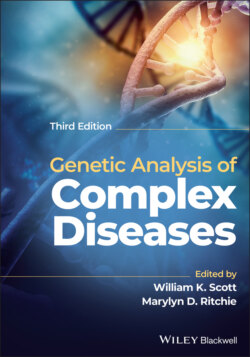Читать книгу Genetic Analysis of Complex Disease - Группа авторов - Страница 66
Relative Pairs
ОглавлениеThe use of relative pairs has been a common ascertainment design in the genetic analysis of complex disorders. This approach may include the use of sibling pairs that are either concordant for the disorder (affected sibpairs) or discordant (one affected and one unaffected). Monozygotic (identical) and dizygotic (nonidentical) twins are a special case of sibling pairs, and the utility of twins in genetic analysis is described in greater detail later in the chapter. Additionally, there are statistical methods that utilize information from other types of relative pairs, such as parent–child, avuncular pairs (e.g. uncle–niece), cousin pairs, and so on (Weeks and Lange 1988; Davis et al. 1996; Kruglyak et al. 1996). In this approach, relatives other than the analysis pair may also be collected, so that linkage analysis can be performed. Keep in mind that in the case of monozygotic twins, only one of the two individuals may be used in the linkage and association analysis because the twins share 100% of their genetic material.
